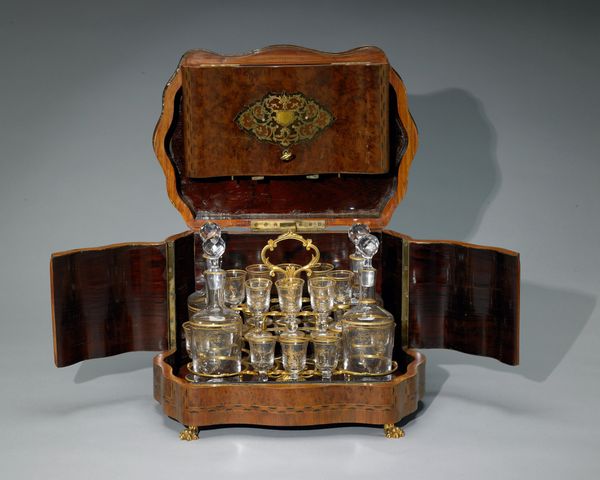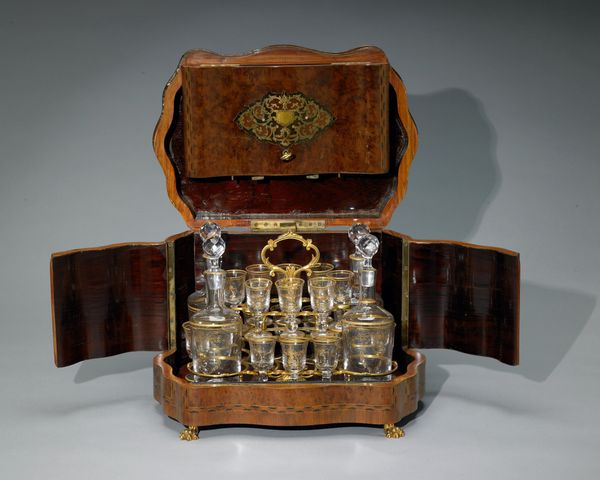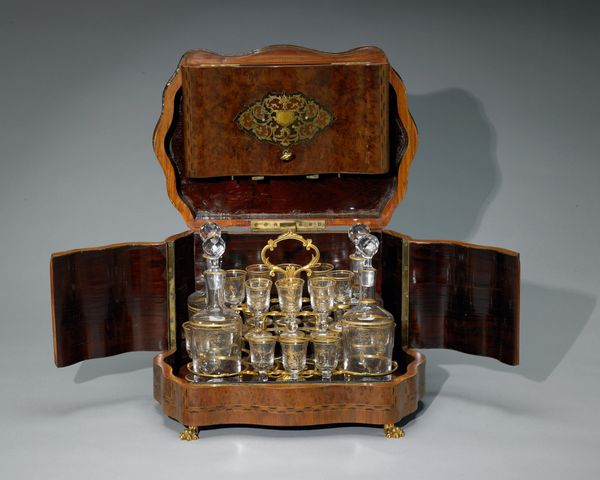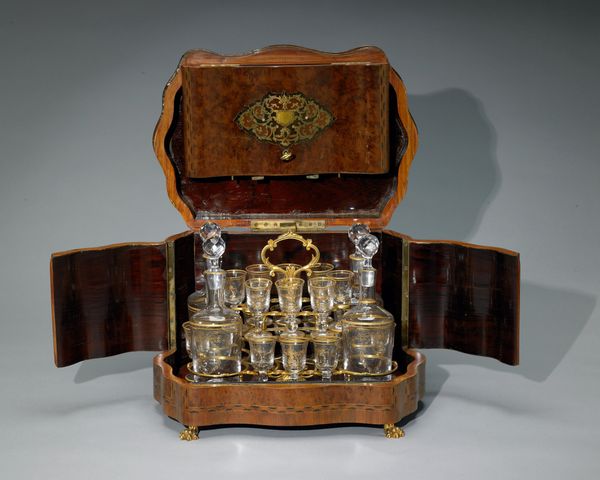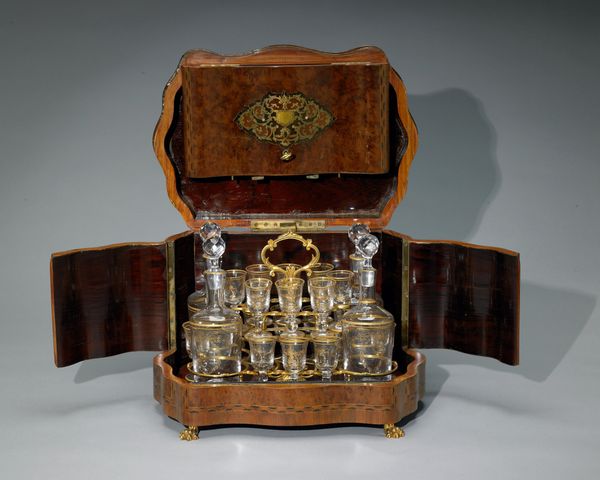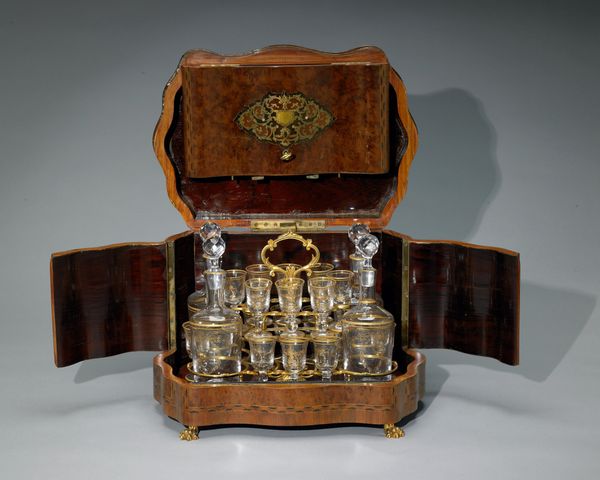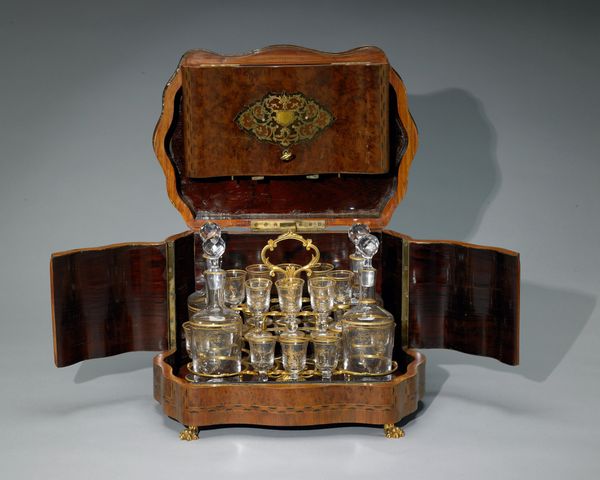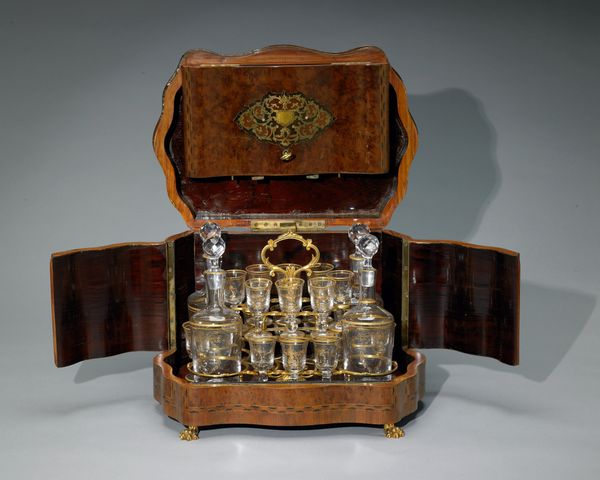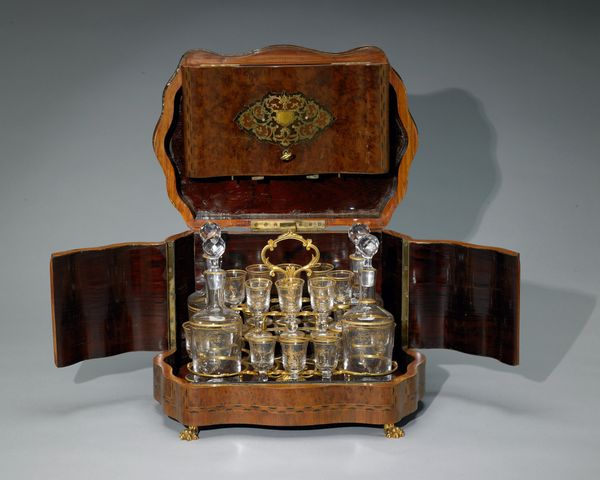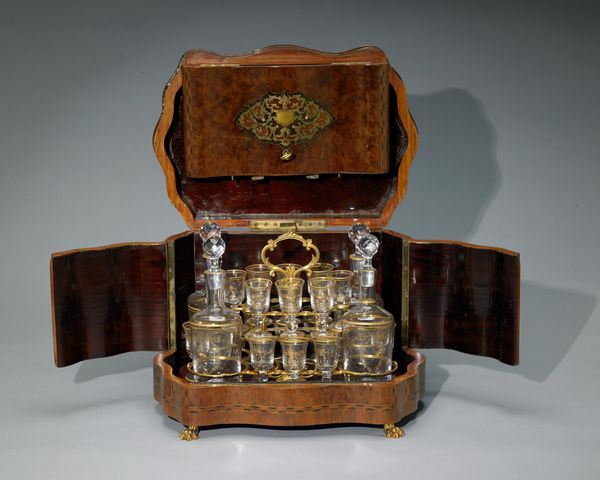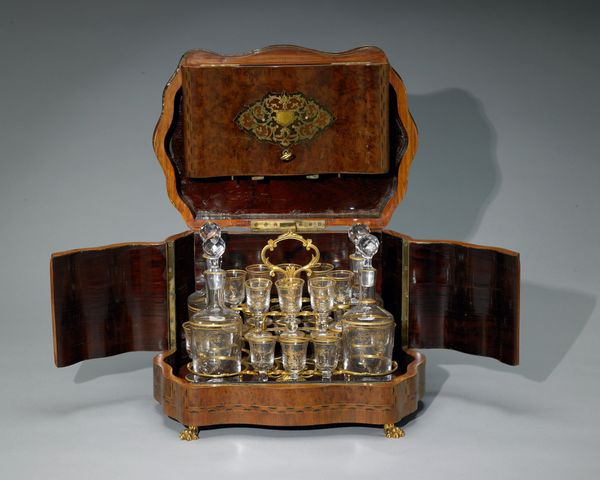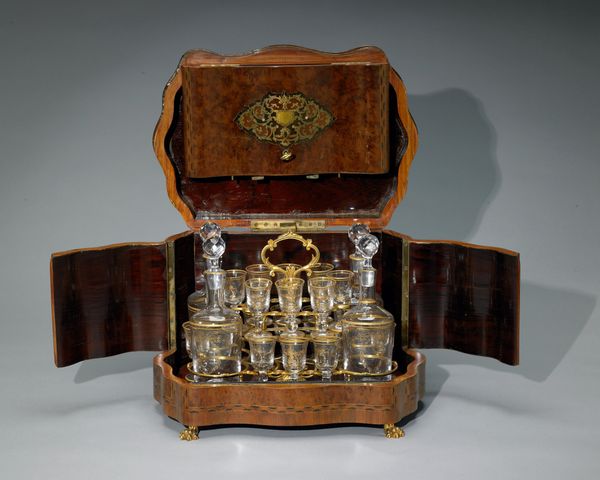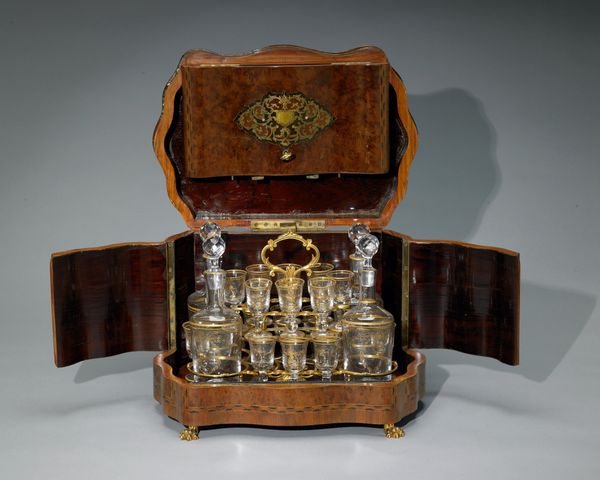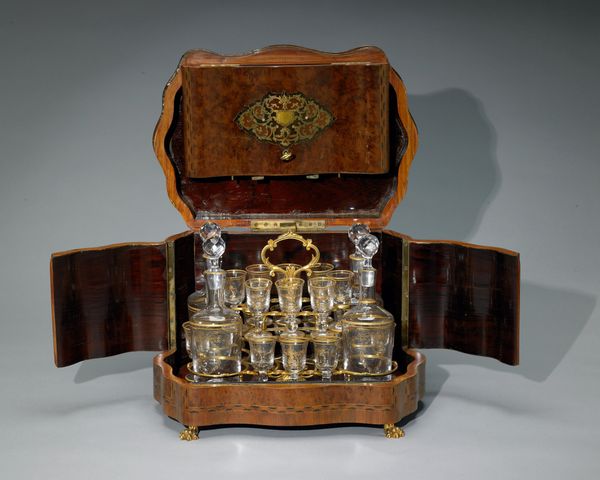
glass, sculpture
#
sculpture
#
glass
#
sculpture
#
decorative-art
Dimensions: 8 3/16 x 2 3/4 x 2 3/4 in. (20.8 x 6.99 x 6.99 cm)
Copyright: Public Domain
Curator: Wow, just look at this. It feels like opening a treasure chest. Editor: It does, doesn't it? We're looking at what’s called a "Decanter with stopper", a glasswork sculpture made around 1870 and now part of the collection at the Minneapolis Institute of Art. Curator: 1870… The precision! Imagine the light catching each of those meticulously crafted glasses. I see wealth, privilege, and access written all over it, or should I say etched? This object radiates conspicuous consumption and class divisions. Editor: Absolutely, but also consider the context. Think of the 19th century – empire, colonialism and its impacts on labour and production practices. Decanters like these are undoubtedly decorative and valuable, and thus often tell hidden stories. Consumption was linked with power; this isn't merely about drinking vessels, it's about signalling status and wealth derived from exploitative systems. Who would have owned such an item? Where and how were all of these glasses and cases constructed? Curator: You're pulling me out of my reverie here. I was lost in the dance of light on crystal, the artistry of each tiny facet… Editor: Art can transport us, yes, but we can’t turn away from reality. For whom was the artistry? What were the real-world effects of this delicate creation? It invites crucial conversations around class, global capitalism, gendered labor, and much more, which were deeply entwined. Curator: It’s almost painful, looking at something so beautiful while acknowledging the source might be tainted, no? It forces a double vision—admiring the craft while critiquing its foundations. But perhaps, that discomfort is the point? The paradox of beauty born from injustice? Editor: Indeed, this tension can spark important reflection. These ornate things can be triggers to unpack complex dynamics that are still shaping society today. By facing that discomfort you name, we enrich our perspective, both appreciating craft and examining the broader history behind it. Curator: Cheers to that!
Comments
No comments
Be the first to comment and join the conversation on the ultimate creative platform.
